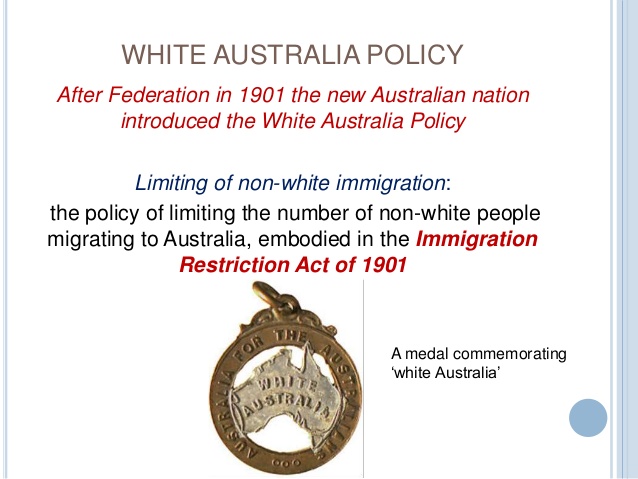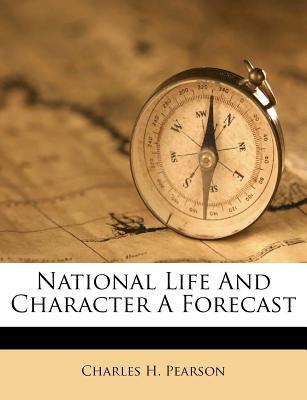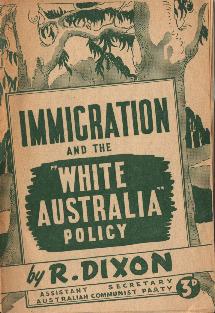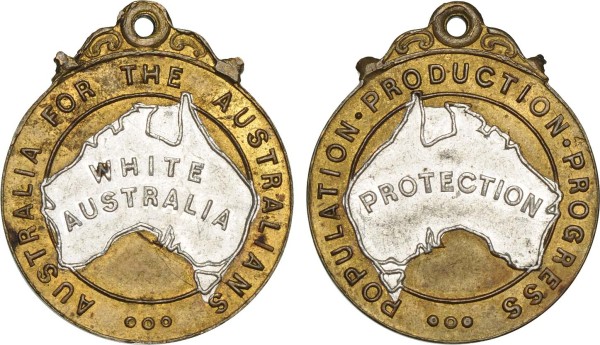In 1901, when Prime Minister Edmund Barton rose in the first federal parliament in Melbourne to support the measures that comprised the White Australia policy – the Immigration Restriction Bill and the Pacific Islands Labourers’ Bill – he held aloft a copy of Charles Pearson’s prophetic book, ‘National Life and Character: A Forecast‘, and quoted the following passage:
The day will come, and perhaps is not far distant, when the European observer will look round to see the globe circled with a continuous zone of the black and yellow races, no longer too weak for aggression or under tutelage, but independent, or practically so, in government, monopolising the trade of their own regions, and circumscribing the industry of the Europeans; when Chinamen and the natives of Hindustan, the states of Central and South America … are represented by fleets in the European seas, invited to international conferences and welcomed as allies in quarrels of the civilised world.
The citizens of these countries will then be taken up into the social relations of the white races, will throng the English turf or the salons of Paris, and will be admitted to inter-marriage. It is idle to say that if all this should come to pass our pride of place will not be humiliated … We shall wake to find ourselves elbowed and hustled, and perhaps even thrust aside by peoples whom we looked down upon as servile and thought of as bound always to minister to our needs. The solitary consolation will be that the changes have been inevitable.
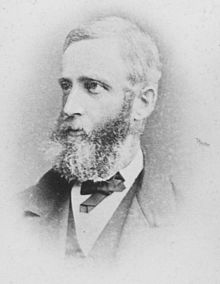 Charles Henry Pearson (1830-1894)
Charles Henry Pearson (1830-1894)
Pearson, a former professor in modern history at King’s College, London had become by the 1890s a leading Melbourne intellectual, a headmaster and journalist, a politician and educational reformer and mentor to future Prime Minister Alfred Deakin, the architect of the White Australia policy. Pearson was a progressive: he had written in support of land tax, women’s rights, the Polish uprising and the Haitian revolution. His book, published by Macmillan in London and New York, in 1893, with its prediction of the decline of the white man and the rise of ‘the Black and Yellow races’ caused a sensation around the world.
It was reviewed at length by Theodore Roosevelt, who commended it for alerting him to the movement of ‘world forces’ of which he had previously been ignorant. In a personal letter, from Washington, where he was working as Civil Service Commissioner, he wrote to tell Pearson of the ‘great effect’ of his book:
“all our men here in Washington … were greatly interested in what you said. In fact, I don’t suppose that any book recently, unless it is Mahan’s ‘Influence of Sea Power’ has excited anything like as much interest or caused so many men to feel that they had to revise their mental estimates of facts”.
Roosevelt, thenceforth, would embark on a re-assertion of American racial vigour (‘the strenuous life’) that led to a vociferous campaign in support of national expansion and to his personal command of the Rough Riders in the Spanish–American war in Cuba.
Pearson, back in London in 1893, wrote to his friend and protégé in Melbourne, Alfred Deakin, gratified at the book’s reception:
“It has been an unexpected but I think real success.‘Hutton, Huxley, Green, Mahaffy & Simcox have been among the critics: and it has altogether been reviewed in some thirty papers.”
Grant Duff was an indignant reviewer, suggesting that ‘the English race [would] certainly awake to its duties, when the time came, and massacre as many Chinese and Hindoos as were found superfluous’. ‘Can you imagine any European power setting itself to massacre 100 millions of Chinamen?’ Pearson asked Deakin.
The more acute of the English reviews of his book noted the significance of his change of domicile for his perspective on world forces. The London Athenaeum noted that Pearson’s analysis of world history ‘quits the beaten track of anticipation’:
His view is not purely or mainly European, nor does he regard the inferior races as hopelessly beaten in the struggle with Western civilization.
The reader can indeed discern that Mr Pearson’s point of view is not London or Paris, but Melbourne. He regards the march of affairs from the Australian point of view, and next to Australia what he seems to see most clearly is the growth of the Chinese power and of the native populations of Africa. In this forecast, in fact, Europe loses altogether the precedence it has always enjoyed.
Residence in the New World provided a quite different perspective on world forces. Singapore, for example, in the last three decades of the nineteenth century, had suddenly become Chinese, as had much of northern Australia.
Faced with the ascendancy of coloured and colonised peoples, Pearson considered these developments to be humiliating for the white man – whose sense of self was constituted in relations of racial dominance – but historically inevitable.
The proper response for the white man was to accept these changes with stoicism and manly fortitude.
Not many agreed with Pearson’s stance. Australian political leaders – presiding in the 1890s over the inauguration of a new nation state – certainly could not. Encouraged by historians such as Bryce and Freeman and political theorists such as John Burgess, of Columbia University, they regarded the exclusion and expulsion of undesirable races as their primary duty as nation builders and they would confront the Colonial Office over their right to see the project through.
In 1892, Pearson was moved to write to Bryce in London warning that if the British denied the Australians complete self-government in this respect, there would certainly be a Declaration of Independence within five years. The historical memory of American events loomed large.
When the Australians determined, as Barton put it, to legislate their racial identity, they had American experience in mind. ‘We have only to look at the great difficulty which is being experienced in America in connexion with the greatest racial trouble ever known in the history of the world, in order to take warning and guard ourselves against similar complications’, leading Liberal H. B. Higgins told the first Australian parliament in 1901. Attorney-General and future Prime Minister, Alfred Deakin also pointed to the importance of American history:
We should be false to the lessons taught us in the great republic of the west; we should be false to the never-to-be-forgotten teachings from the experience of the United States, of difficulties only partially conquered by the blood of their best and bravest; we should be absolutely blind to and unpardonably neglectful of our obligations, if we fail to lay those lessons to heart.
Deakin praised those who drew up the Australian constitution (of whom he was one) for improving on the American example. He highlighted the significance of Section 51, sub-sections 26-30, in equipping Australia to deal with the problem of ‘the admixture of other races’:
Our Constitution marks a distinct advance upon and difference from that of the United States, in that it contains within itself the amplest powers to deal with this difficulty in all its aspects. It is not merely a question of invasion from the exterior. It may be a question of difficulties within our borders, already created, or a question of possible contamination of another kind. I doubt if there can be found in the list of powers with which this Parliament, on behalf of the people, is endowed – powers of legislation – a cluster more important and more far reaching in their prospect than the provisions contained in sub-sections (26) to (30) of section 51, in which the bold outline of the authority of the people of Australia for their self-protection is laid down.
Whereas the United States Constitutional Amendments provided ‘special inhibitions’, Section 51 of the Australian Constitution made provision for ‘special laws’ to deal with other ‘races’.
In supporting the legislation to expel the Pacific Islanders, Higgins again referred to the history of the United States:
“I say that that country, more especially the Southern States, would have been ten times better off if the negroes had not been left there. There are no conditions under which degeneracy of race is so great as those which exist when a superior race and an inferior race are brought into close contact.”
At issue for Higgins were the prospects of white workers:
I feel convinced that people who are used to a high standard of life – to good wages and good conditions – will not consent to labour alongside men who receive a miserable pittance and who are dealt with very much in the same way as slaves.
The legislation was, according to Higgins, who would shortly become president of the Commonwealth Court of Conciliation and Arbitration, ‘the most vitally important measure on the programme which the government has put before us’. He watched its course, he said, with the ‘deepest anxiety’. In 1907 Higgins would use his position on the Arbitration Court to define a ‘living wage’ designed to secure the status of the white men as workers, whom he was always careful to define as ‘civilised beings … living in a civilised community’.
With the passage of the Pacific Islands Labourers Act in 1901, the Commonwealth of Australia was inaugurated in an act of racial expulsion. Australians would do what the United States – with a population of eight million Blacks – could not. For Deakin and his fellow members of parliament, the sovereignty of the people meant the capacity to protect their racial character. But when they spoke of the necessity of ‘self-protection’, they spoke not as ‘Anglo-Saxons’, but as ‘white men’. Although neither the Pacific Islands Labourers Act nor the Immigration Restriction Act referred to race by name, their intention was clear enough. ‘The two things go hand in hand’, advised Attorney-General Deakin.
They were ‘the necessary complement of a single policy – the policy of securing a “White Australia”.’
The Australian Immigration Restriction Act, following Natal and the United States, incorporated a literacy test, in this case, a dictation test, that was so framed as to give Customs Officers maximum flexibility in ensuring that all undesirable immigrants would fail. Applicants could not prepare for this test, which required them to write out, at dictation, any prescribed passage of fifty words in any European language. The American emphasis on understanding the constitution and the importance of education to citizenship had disappeared altogether. In 1908, for example, the following dictation test was given in Western Australia:
Very many considerations lead to the conclusion that life began on sea, first as single cells, then as groups of cells held together by a secretion of mucilage, then as filaments and tissues. For a very long time low-grade marine organisms are simply hollow cylinders, through which salt water streams’.
The aim in Australia was not to ‘discriminate against illiteracy’, as Cabot Lodge had recommended, but to discriminate against non-whites, in particular ‘Asiatics’ and more particularly, Japanese, as their mortified diplomatic representatives soon learned when they read the parliamentary debates. The point that caused most offence to the Japanese was that they were racialised as ‘Asiatics’ or worse, lumped together with all non-whites, including Kanakas and Negroes. On 3 May 1901, H. Eitaki, the Japanese Consul in Sydney wrote a note of protest to the Australian government:
The Japanese belong to an Empire whose standard of civilization is so much higher than that of Kanakas, Negroes, Pacific Islanders, Indians or other Eastern peoples, that to refer to them in the same terms cannot but be regarded in the light of a reproach, which is hardly warranted by the fact of the shade of the national complexion …
Might I suggest, therefore, that your Government formulate some proposal which, being accepted by my Government would allow of the people of Japan being excluded from the operation of any Act which directly or indirectly imposed a tax on immigrants on the ground of colour.
As the wounded Japanese realised, the literacy test was a method of ‘indirect’ racial discrimination. Even so, they tried to change Australian minds by pointing to the high educational standards of modern Japan, which faithfully emulated ‘the most approved European methods’. Four months later, on 18 September, as the legislation was passing through the House of Representatives, Eitaki wrote again to Barton:
In Japanese schools and other educational establishments the most approved methods are adopted, and the most important works on science, literature, art, politics, law etc which are published in Europe from time to time, are translated into Japanese for the use of students. Thus a Japanese, without being acquainted with any other language than his own, is frequently up to a very high educational standard in the most advanced branches of study, by means of a liberal use of these translations.
Why could not the Japanese language be put on the same footing as, say, ‘the Turkish, the Russian, the Greek, the Polish, the Norwegian, the Austrian, or the Portuguese, or why, if an immigrant of any of the nationalities … mentioned may be examined in his own language [emphasis in original], the same courtesy should not be extended to a Japanese’. The Consul advised that his government requested that his people not be marked out ‘to suffer a special disability; or in other words, that they may be examined in Japanese. This can easily be provided for by adding the words “or Japanese” after the word “European”’ in the legislation.
Despite their pained and persistent protests, in Sydney and to the Foreign Office in London, they were unable to defeat the test’s binary racial logic, its division of the world into ‘white’ and ‘non-white’.
In employing a literacy test in a European language as an instrument for racial exclusion, the Australians paid deference to Imperial sensibilities. Meeting with the colonial premiers at Queen Victoria’s Jubilee, in London, in June 1897, Chamberlain impressed on them the importance of upholding the ‘traditions of the empire’ which made no ‘distinction in favour of or against race or colour’. In the white colonies of the empire, as in the southern states of the American Union, the modern instrument of a literacy test was adopted to meet and defeat prohibitions against racial discrimination. As in South Africa, many Australian politicians, including Higgins, protested against using a cowardly subterfuge and introduced an amendment into parliament, that almost passed, calling for a straight out, manly, declaration against non-white immigration.
The Colonial Office preference for courtesy, or hypocrisy, in immigration restriction legislation prevailed, but the adoption of an American – republican – model of exclusion had an unintended consequence for the Colonial Office: the removal of the special status accorded to British subjects across racial barriers.
As Charles Lucas noted perceptively in his paper ‘The Self-Governing Dominions and Coloured Immigration’:
It is, I think noteworthy that Mr Chamberlain, who was in full sympathy with the self-governing communities, was especially outspoken in protesting against giving offence in the methods of exclusion and against harsh treatment of coloured British subjects, but it will be noted at the same time that the object of avoiding offence in methods of exclusion militates against giving any preference to British subjects.
The principle of the Natal Act, which Mr Chamberlain accepted and recommended, is not to specify any particular race, but to exclude all who cannot write a European language ie not to distinguish in any way among non-Europeans between those who are and those who are not British subjects.
And in declaring for a White Australia, that was the Australians’ intention. In that same founding year of 1901, they passed legislation (the Post and Telegraph Act) that, to the intense annoyance of the British, specifically targeted non-whites for exclusion from employment on ships carrying mails: ‘only white labour shall be employed in such carriage.’
The Japanese again protested: the legislation contained ‘the same objectionable reproach to the Japanese nation, on the ground of color, against which protests have been made on former occasions.’
Further legislation relating to suffrage, naturalisation, old age and invalid pensions and the maternity allowance all specified racial grounds for discrimination in the name of White Australia. The dictation test remained in immigration legislation until 1958 and lingered – oddly but symbolically – in some industrial awards (such as the Margarine Award). Australia had nailed its colours to the mast.
White Australia became, in turn, an example for others to follow in South Africa, Canada, New Zealand and the United States. In 1908, Roosevelt, as president of the United States was conspiring with Canada to bring pressure to bear on Britain to bring a complete stop to Asian immigration to white men’s countries (‘the Japanese must learn that they will have to keep their people in their own country’).
In 1910, the new Union of South Africa was described by Sir Charles Lucas in the Colonial Office, with the precedent of Australia in mind, as ‘a White Man’s Union’.
A ‘new religion’ was indeed sweeping the world. When the American writer, Lothrop Stoddard, published The Rising Tide of Color in support of a eugenicist scheme of immigration restriction in the United States, he saluted the ‘lusty young Anglo-Saxon communities of the Pacific’ for setting an example by emblazoning across their portals the legend:
“All White”.’ ‘Nothing is more striking’, he wrote, ‘than the instinctive and instantaneous solidarity which binds together Australians and Afrikanders, Californians and Canadians, into a “sacred union” at the mere whisper of Asiatic immigration.’
